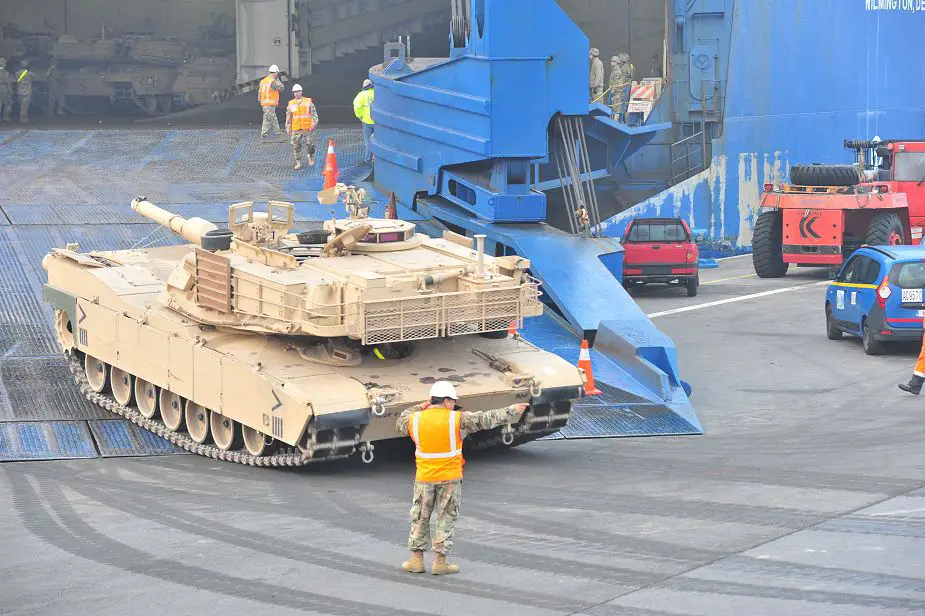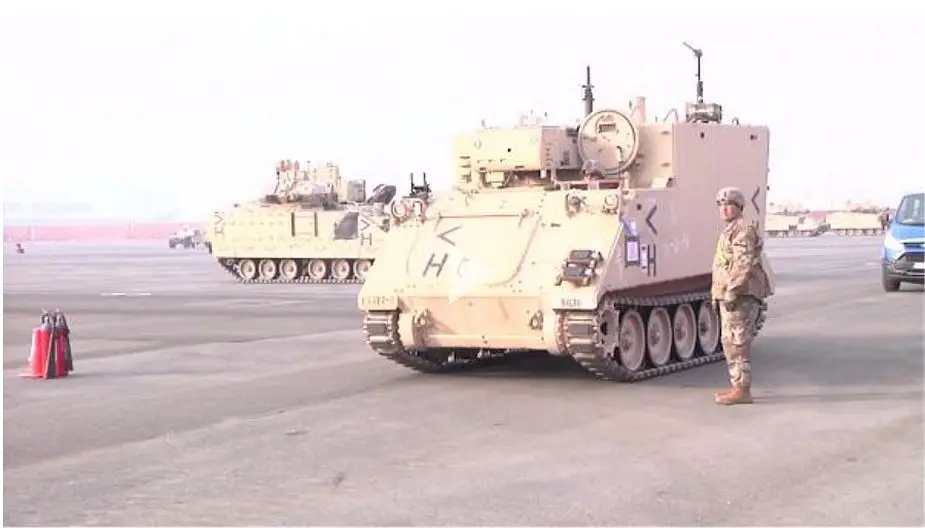(321) 04-28-2018-to-05-04-2018___****THE****WINDS****of****WAR****
http://www.timebomb2000.com/vb/show...5-04-2018___****THE****WINDS****of****WAR****
(322) 05-05-2018-to-05-11-2018___****THE****WINDS****of****WAR****
http://www.timebomb2000.com/vb/show...5-11-2018___****THE****WINDS****of****WAR****
(323) 05-12-2018-to-05-18-2018___****THE****WINDS****of****WAR****
http://www.timebomb2000.com/vb/show...5-18-2018___****THE****WINDS****of****WAR****
==========
For links see article source.....
Posted for fair use.....
https://www.stripes.com/news/army-a...-carson-and-joint-base-lewis-mcchord-1.527874
Army announces new brigades at Fort Hood, Fort Carson and Joint Base Lewis-McChord
By ROSE L. THAYER | STARS AND STRIPES
Published: May 18, 2018
Three new Security Force Assistance Brigades designed to conduct advise-and-assist operations with allied and partner nations have been assigned to bases in Texas, Colorado and Washington, the Army announced Friday.
The Army said the 3rd Security Force Assistance Brigade will be assigned to Fort Hood in Texas, the 4th SFAB at Fort Carson in Colorado and 5th SFAB at Joint Base Lewis-McChord in Washington. These specialized units consist of about 800 soldiers, ranked sergeant and above, with a primary mission to fulfill the Army’s train, advise and assist missions around the globe.
“There will always be a need to help build allied or partnered forces, and the SFABs will take on this critical mission and allow brigade combat teams to concentrate on preparing for potential full-spectrum combat operations against a near-peer adversary” Army Secretary Mark Esper said in a news release.
The three new SFABs are the final three active-duty units joining the 1st SFAB stationed at Fort Benning in Georgia and the 2nd SFAB at Fort Bragg in North Carolina. The National Guard is still considering locations for its SFAB. The Fort Benning brigade is deployed to Afghanistan.
The decision to station the brigades at these three posts was based on strategic considerations including projected time to activate and train an SFAB, presence of senior grade personnel to assign to the unit and required facility costs, the Army said.
related articles
With 1st SFAB deployed, Army looks to build more adviser brigades
US advisers: Training Afghan aircraft mechanics vital to country's military independence
“Security Force Assistance Brigades are a critical addition to our Army, and they will be increasingly called upon to deploy throughout the world to serve as combat advisers in support of theater security objectives,” said Lt. Gen. Paul E. Funk II, III Corps and Fort Hood commander.
Earlier this year, Fort Hood held a recruiting event for SFABs with nearly 1,000 interested soldiers in attendance, according to local news reports.
Maj. Gen. Randy A. George, commander of the 4th Infantry Division and Fort Carson, said he was pleased the new unit will be stationed there.
“It just makes sense when you consider Fort Carson’s premier training range areas, excellent high-altitude location and extremely supportive community,” George said.
Soldiers for the units are screened based on qualifications and experience and are among the most highly trained tactical leaders in the Army. The unit will receive the most advanced military equipment available. SFAB soldiers receive special training through the Military Advisor Training Academy to include language, foreign weapons and the Joint Fires Observer course, the Army stated.
Each SFAB’s officers and noncommissioned officers come with previous experience in the jobs that they are assigned. The Army has incentives to include promotion and special pay to join the SFAB, a $5,000 assignment bonus and choice of duty station for up to 36 months.
The Army also stated officials plan to establish a command element within Army Forces Command at Fort Bragg, with the intent to conduct training and readiness oversight of the SFABs.
“I think we’ll see a much better adviser capability built out of these brigades,” said Gen. Mark Milley, the Army chief of staff. “Meanwhile, we’ll recoup the readiness value of bringing the regular [combat] brigades home to train for their regularly designed missions.”
Thayer.rose@stripes.com
Twitter: @Rose_lori
previous coverage
Senate leader wants a new Army advisory brigade for Africa
http://www.timebomb2000.com/vb/show...5-04-2018___****THE****WINDS****of****WAR****
(322) 05-05-2018-to-05-11-2018___****THE****WINDS****of****WAR****
http://www.timebomb2000.com/vb/show...5-11-2018___****THE****WINDS****of****WAR****
(323) 05-12-2018-to-05-18-2018___****THE****WINDS****of****WAR****
http://www.timebomb2000.com/vb/show...5-18-2018___****THE****WINDS****of****WAR****
==========
For links see article source.....
Posted for fair use.....
https://www.stripes.com/news/army-a...-carson-and-joint-base-lewis-mcchord-1.527874
Army announces new brigades at Fort Hood, Fort Carson and Joint Base Lewis-McChord
By ROSE L. THAYER | STARS AND STRIPES
Published: May 18, 2018
Three new Security Force Assistance Brigades designed to conduct advise-and-assist operations with allied and partner nations have been assigned to bases in Texas, Colorado and Washington, the Army announced Friday.
The Army said the 3rd Security Force Assistance Brigade will be assigned to Fort Hood in Texas, the 4th SFAB at Fort Carson in Colorado and 5th SFAB at Joint Base Lewis-McChord in Washington. These specialized units consist of about 800 soldiers, ranked sergeant and above, with a primary mission to fulfill the Army’s train, advise and assist missions around the globe.
“There will always be a need to help build allied or partnered forces, and the SFABs will take on this critical mission and allow brigade combat teams to concentrate on preparing for potential full-spectrum combat operations against a near-peer adversary” Army Secretary Mark Esper said in a news release.
The three new SFABs are the final three active-duty units joining the 1st SFAB stationed at Fort Benning in Georgia and the 2nd SFAB at Fort Bragg in North Carolina. The National Guard is still considering locations for its SFAB. The Fort Benning brigade is deployed to Afghanistan.
The decision to station the brigades at these three posts was based on strategic considerations including projected time to activate and train an SFAB, presence of senior grade personnel to assign to the unit and required facility costs, the Army said.
related articles
With 1st SFAB deployed, Army looks to build more adviser brigades
US advisers: Training Afghan aircraft mechanics vital to country's military independence
“Security Force Assistance Brigades are a critical addition to our Army, and they will be increasingly called upon to deploy throughout the world to serve as combat advisers in support of theater security objectives,” said Lt. Gen. Paul E. Funk II, III Corps and Fort Hood commander.
Earlier this year, Fort Hood held a recruiting event for SFABs with nearly 1,000 interested soldiers in attendance, according to local news reports.
Maj. Gen. Randy A. George, commander of the 4th Infantry Division and Fort Carson, said he was pleased the new unit will be stationed there.
“It just makes sense when you consider Fort Carson’s premier training range areas, excellent high-altitude location and extremely supportive community,” George said.
Soldiers for the units are screened based on qualifications and experience and are among the most highly trained tactical leaders in the Army. The unit will receive the most advanced military equipment available. SFAB soldiers receive special training through the Military Advisor Training Academy to include language, foreign weapons and the Joint Fires Observer course, the Army stated.
Each SFAB’s officers and noncommissioned officers come with previous experience in the jobs that they are assigned. The Army has incentives to include promotion and special pay to join the SFAB, a $5,000 assignment bonus and choice of duty station for up to 36 months.
The Army also stated officials plan to establish a command element within Army Forces Command at Fort Bragg, with the intent to conduct training and readiness oversight of the SFABs.
“I think we’ll see a much better adviser capability built out of these brigades,” said Gen. Mark Milley, the Army chief of staff. “Meanwhile, we’ll recoup the readiness value of bringing the regular [combat] brigades home to train for their regularly designed missions.”
Thayer.rose@stripes.com
Twitter: @Rose_lori
previous coverage
Senate leader wants a new Army advisory brigade for Africa




/arc-anglerfish-arc2-prod-mco.s3.amazonaws.com/public/5E6WLDSBU5HLFE6S43KWDE76Y4.jpg)